The history of the Outer Ring Road began in 1868, when the government decided that, contrary to the previous idea, a navigable canal should not be built on the current route of the Outer Ring Road to serve industrial plants, but an elegant road worthy of a big city.
Although the planned route was roughly on the edge of the built-up area of the city at the time, there were no empty lots there: houses and other buildings stood there, for example, the block of the railway station (the predecessor of today's Nyugati Railway Station) was also on the road, so much so that it bisected today's Teréz Boulevard. These areas had to be bought or appropriated so that the planned elegant road could be realised. Not only the area of the road itself was appropriated, but also the surrounding plots, since the decision-makers did not want to see factories and one-story houses here, but elegant palaces.
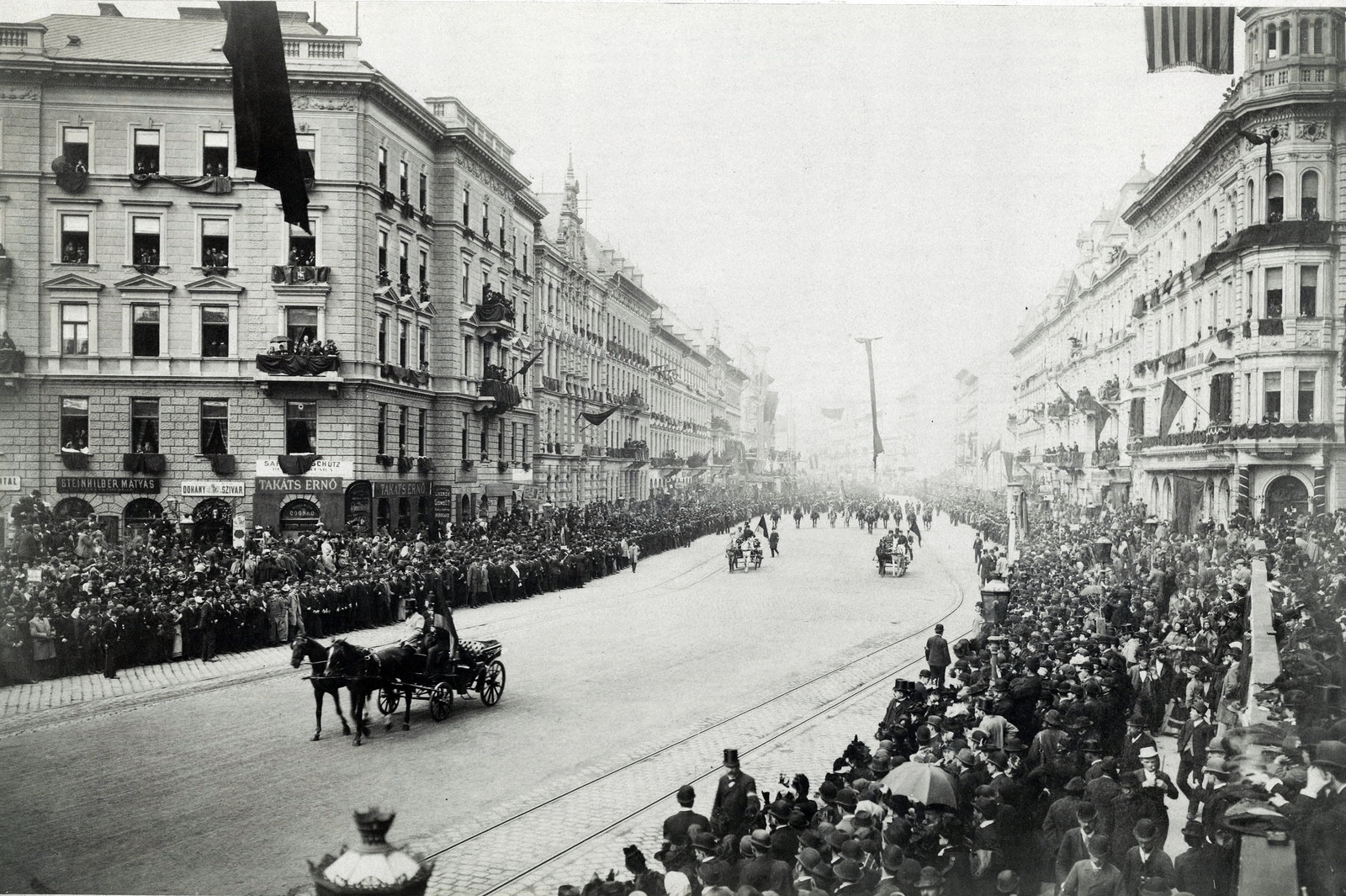
By the time of Lajos Kossuth's funeral, in 1894, the Outer Ring Road and as a part of it, Erzsébet Boulevard were almost completely ready (Photo: Fortepan/Budapest Archives, Reference No.: HU.BFL.XV.19.d.1.04.005)
The construction that had just begun was halted by the Vienna stock market crash of 1873 and the resulting credit crisis, so only a small part of the road could be opened to the public in 1873-1874.
Larger scale work began in the 1880s, which was boosted by the fact that, from 1884, new buildings here were exempted from property tax for 15 years, and in 1887, the first tram in Budapest started on the Outer Ring Road, albeit only as an experiment.
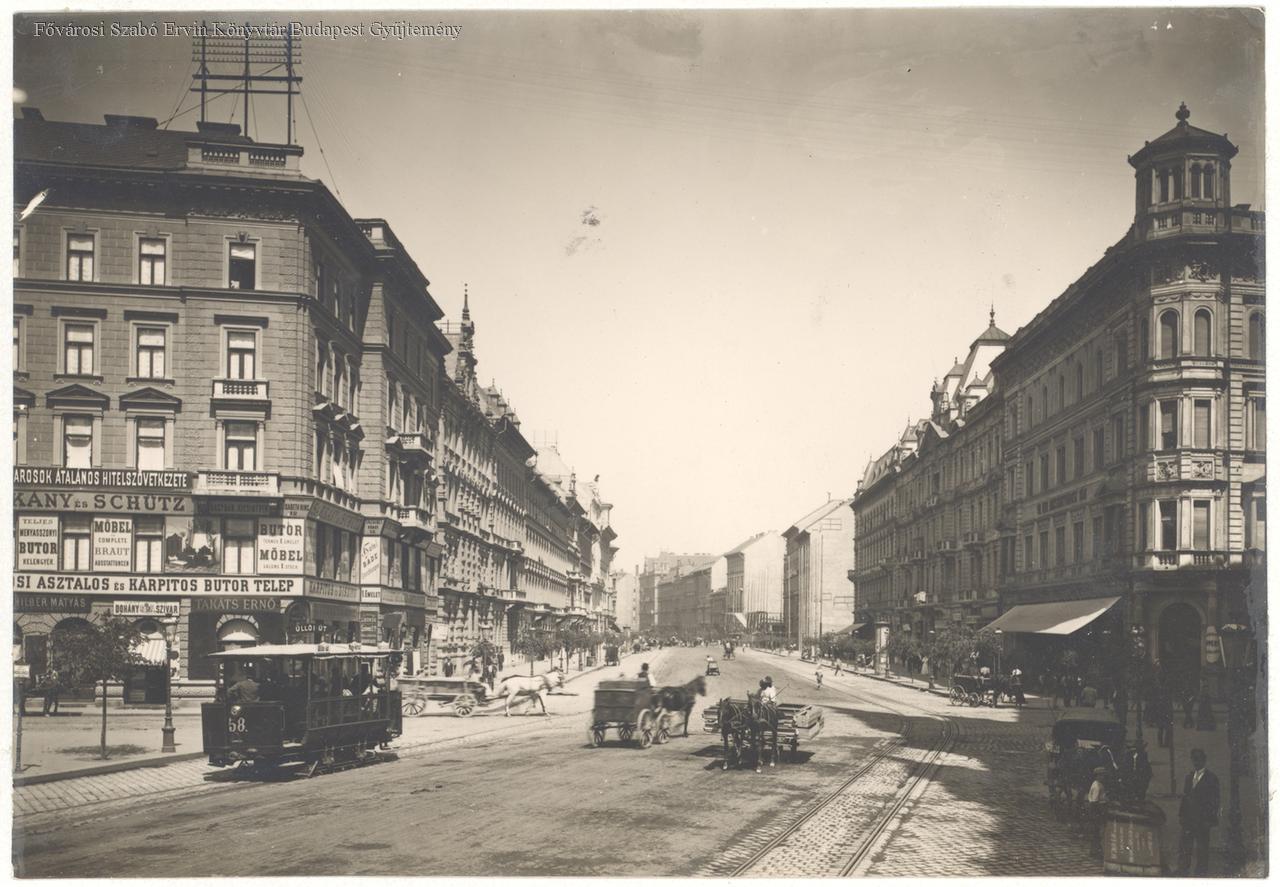
The Outer Ring Road in the 1890s. The picture also shows that not all plots have been built in yet (Photo: FSZEK Budapest Collection)
The section of the Outer Ring Road from Margit Bridge to Üllői Road was almost completed by 1888, a wide, elegant road encircling the centre of Pest. However, there were sections where an older building was still stuck in the axis of the new road. In fact, it was two buildings, both standing on the former Miksa Street. Nowadays, people would look for this street in vain on the map, it has been completely absorbed by the new Erzsébet Boulevard.
The two affected buildings stood on the site of today's houses on 38 and 32 Erzsébet Boulevard, according to the previous numbering, they were at 40 and 34. The decision on the expropriation of these two buildings and two other plots of land was made 135 years ago by the Budapest Public Works Council and the capital council. On 23 February 1888, Fővárosi Lapok reported on the developments as follows:
"As spring approached, the capital city council and the public works council set about reorganising the largely built-up Erzsébet Boulevard. The last two dilapidated buildings, the Schermann House at 34 and Bogdanovits' at 40 were appropriated recently, along with the Salzer's and Ocskay's plots."
According to the plans presented in the newspapers, it was decided to demolish the dilapidated houses. By the year 1888, the Public Works Council had ambitious ideas regarding the Outer Ring Road, since they had originally calculated to grant permission for the construction of twenty new palaces that year.
By demolishing the two houses involved in the above-mentioned decision, the entire width of Erzsébet Boulevard became free. The road construction, i.e., paving and sewerage works were already in full swing at that time, and the plan was to run the tram to Kerepesi (today's Rákóczi) Road by the end of the year.
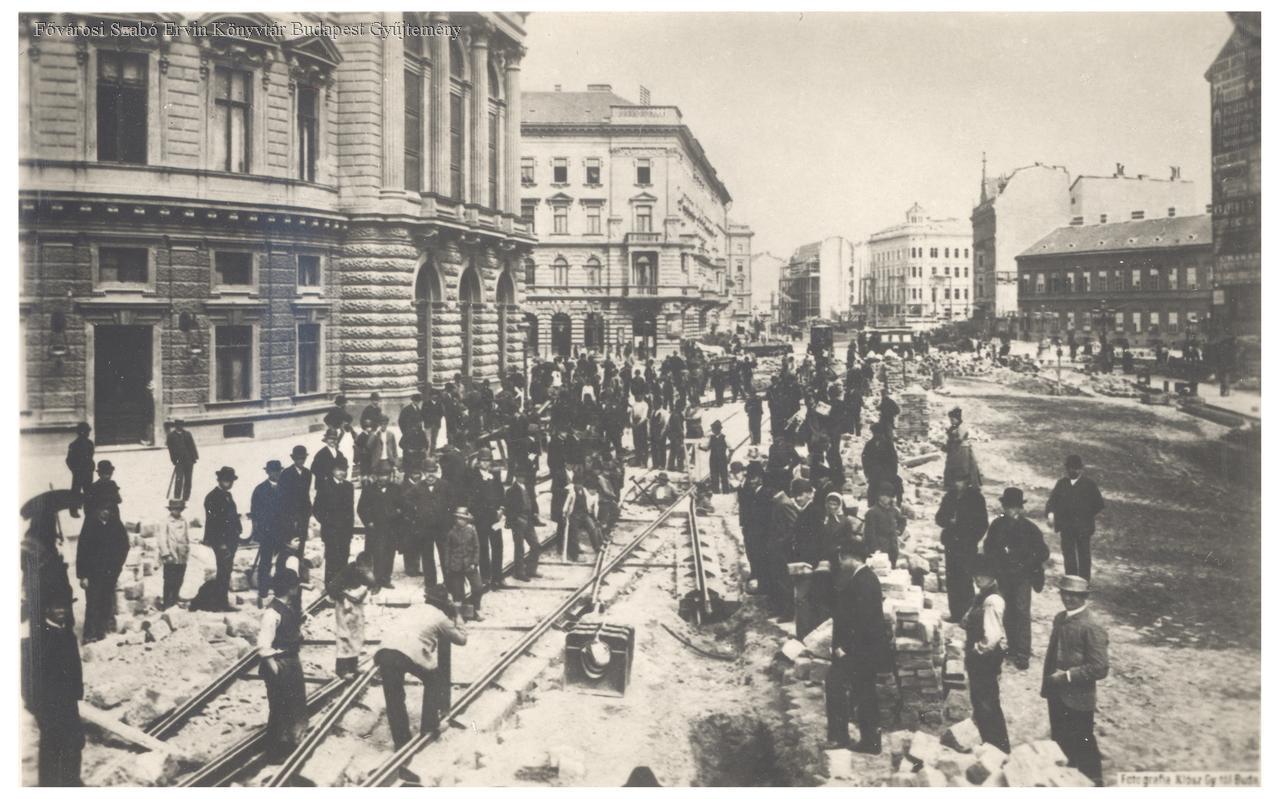 Tramway construction on Outer Ring Road (Photo: FSZEK Budapest Collection)
Tramway construction on Outer Ring Road (Photo: FSZEK Budapest Collection)
New houses were not immediately built on the site of the two older houses that were to be demolished in February 1888, the house at 38 Erzsébet Boulevard was completed in 1892 based on the plans of Ernő Schannen, for dr József Hlatky and his wife. The house at 32 Erzsébet Boulevard was designed by Rezső Ray, and the building permits were issued in 1890, the client here was József Galitzenstein.
Although the newspapers proudly announced that by the end of the year, the Outer Ring Road had become passable from Margit Bridge to Üllői Road, and for a section even further, and many new buildings had been erected, of course, this did not mean that by 1888 the boulevard looked like nowadays. After all, only between 1889 and 1896, 128 new houses were completed, essentially for the millennium celebrations.
Despite all this, the official report of the Budapest Public Works Council for 1886, 1887 and 1888 (one report was prepared for the three years) could proudly mention that in 1888, 85 new houses were built along the entire boulevard, of which 16 was constructed on Erzsébet Boulevard.
The Outer Ring Road was officially handed over in 1896 as part of the millennium program series celebrating the thousand-year-old Hungary, at which time it was already possible to walk from the Danube to the Danube - from the Margit Bridge built in 1876 to today's Boráros Square - although the southern closure, today's Petőfi Bridge, was only completed in 1937. By the way, construction continued on the Outer Ring Road even after the official opening ceremony: in the next ten years, 37 new houses were handed over.
Cover photo: The elegant Erzsébet Boulevard already with trees in the 1890s (Photo: FSZEK Budapest Collection)

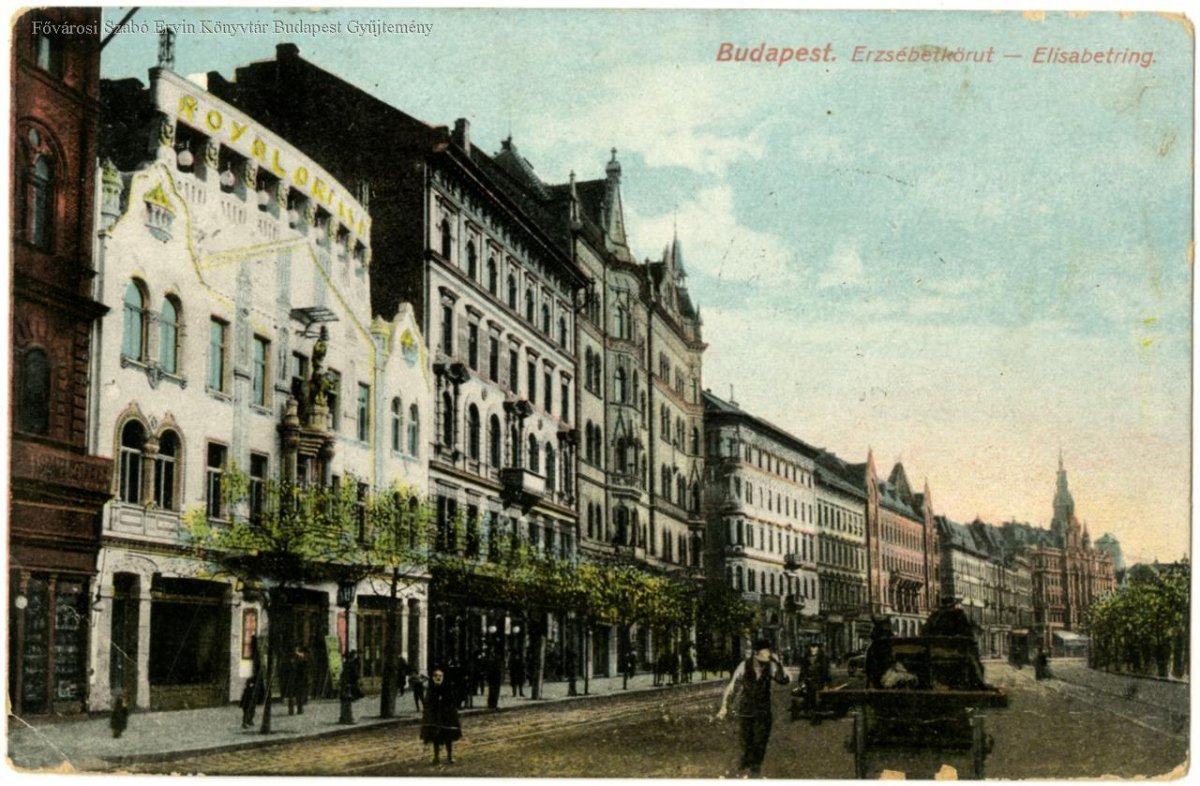

































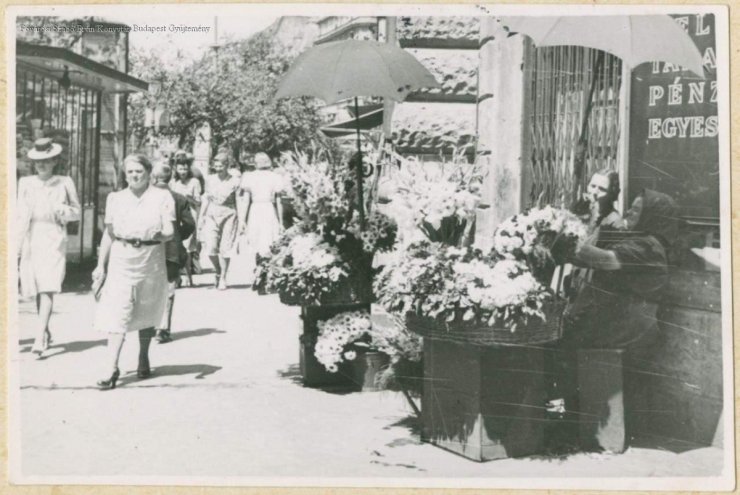
Hozzászólások
Log in or register to comment!
Login Registration